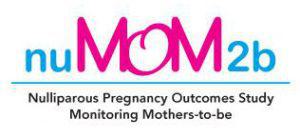Predicting Preterm Birth for First Time Mothers Still a Mystery
Mar 28, 2017
A national collaborative study, including clinician-researchers from Magee-Womens Hospital of UPMC, found that two universal screening methods for preterm birth were not effective in low-risk women in their first pregnancy.
Researchers found that neither transvaginal cervical length measurement or fetal fibronectin tests adequately predicts preterm birth.

The Nulliparous Pregnancy Outcomes Study: Monitoring Mothers-to-Be (nuMoM2b) is a large cohort project that studies pregnant women who will be delivering for the first time (nulliparous women) and examines predictors for common adverse pregnancy outcomes. The study included 10,000 women recruited from eight clinical centers including Magee-Womens Hospital of UPMC.
Preterm birth is the leading cause of infant mortality. In certain cases, past pregnancy outcomes can identify woman susceptible to preterm birth. But for women pregnant for the first time, they have little to no pregnancy history to help guide their treatment.
To try and identify first-time pregnancy risks, two methods are frequently used by doctors: measuring the cervical length through ultrasounds, and fetal fibronectin tests. Doctors will look for early signs of the cervix opening or thinning out to predict preterm birth. Fetal fibronectin is a protein that acts like glue to bond the baby’s bag of water to the uterus. In anticipation of birth, these proteins are secreted from the uterus into the vagina. If this protein is detected before 35 weeks, doctors believed it could be a predictor of preterm birth.

Dr. Hyagriv Simhan, Division Director of Maternal-Fetal Medicine at Magee-Womens Hospital of UPMC, and primary investigator at Magee-Womens Research Institute, worked on the study and commented on the results, “Routine universal screening using transvaginal cervical length, quantitative fetal fibronectin, or both did not accurately predict subsequent spontaneous preterm birth and should not be used in routine clinical care for women in their first pregnancy. This impacts our approach to the prediction and prevention of preterm birth.”
The results of this study emphasize the need for further research to find better prediction methods. And that is the mission of this research cohort. “Our nuMoM2b study is designed for us to be able to continue to discover and develop new tests and strategies to predict and, ultimately, prevent preterm birth and its downstream adverse consequences,” Dr. Simhan said.
Dr. Simhan also explained the benefits of a large collaborative research project. “Large multicenter trials make findings more relevant and generalizable because the number of women in the trial is very large, larger than any one center could do. Also, the multicenter trial brings a geographic and demographic diversity to the findings, making the findings applicable to a broader range of women.”
The findings are published in the March 14 issue of the Journal of the American Medical Association (JAMA), found here.